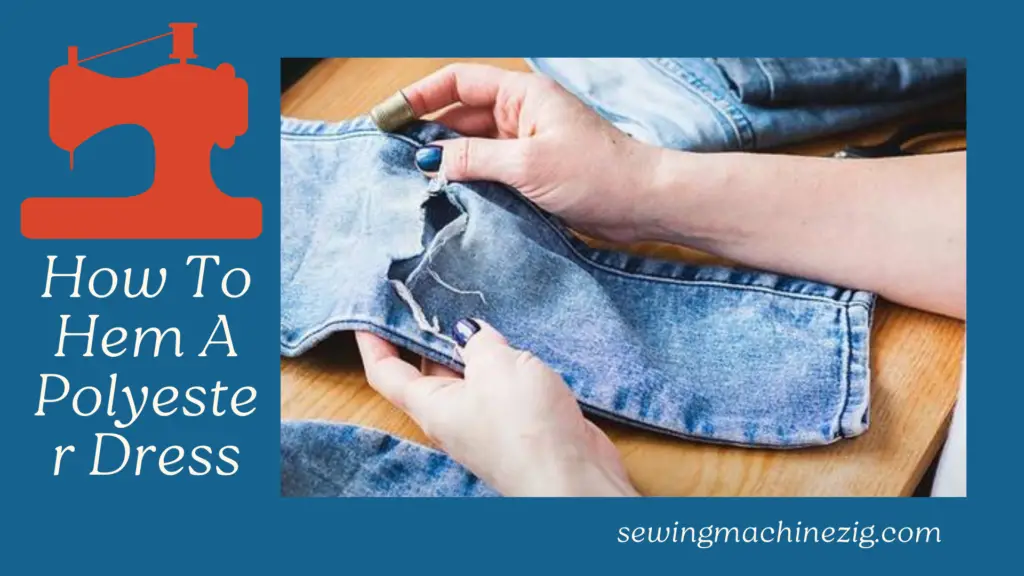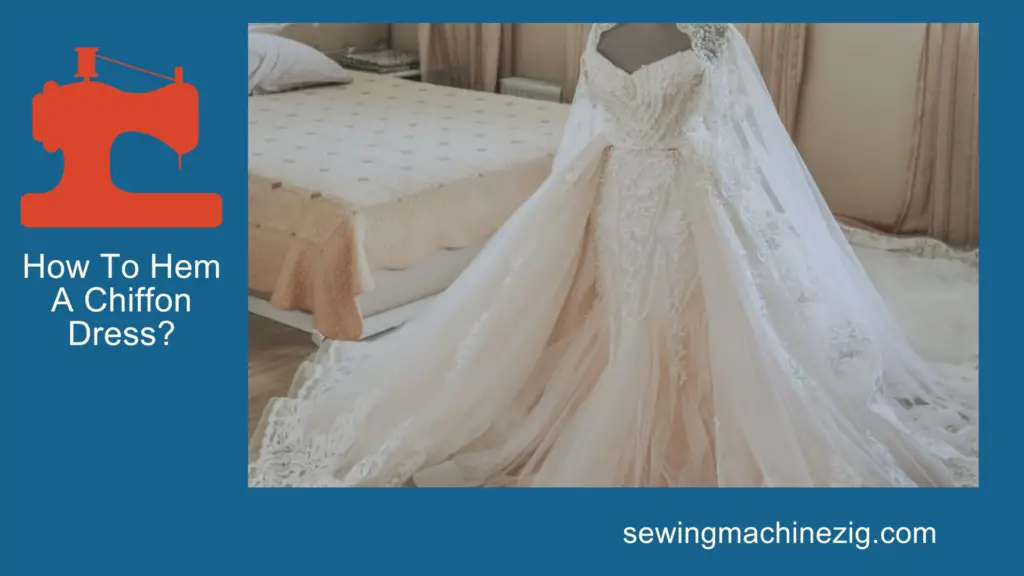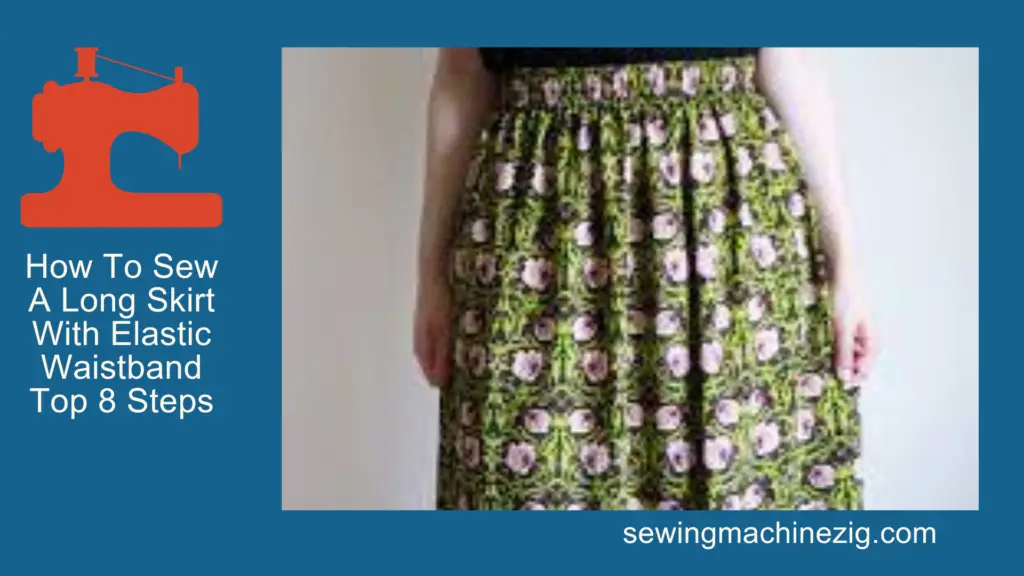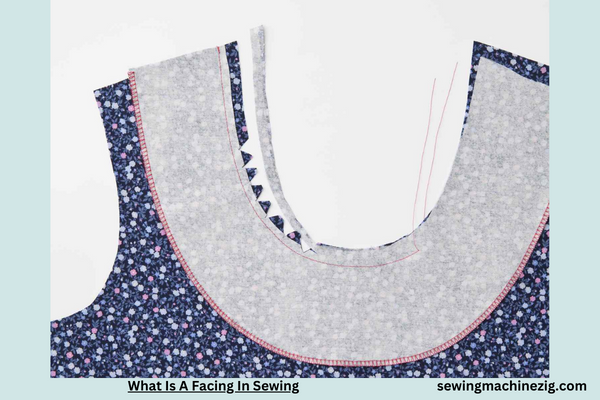
In the intricate realm of sewing, understanding terminology is as essential as mastering stitches. So, what is a facing in sewing, and why is it a pivotal element in garment construction? A facing is more than a mere finishing touch; it’s a technique that adds structure, conceals raw edges, and contributes to the overall polished look of your creations.
In this exploration, ”what is a facing in sewing” ” we’ll unravel the significance of facings, decoding their role in elevating your sewing projects by providing a professional, tailored appearance. Join us as we delve into the art of sewing and demystify the importance of facings.
What Is A Facing In Sewing Detailed Answer
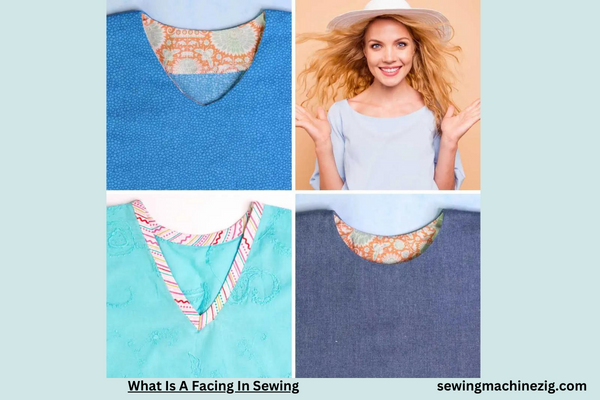
In the expansive realm of sewing, understanding the terminology and techniques is crucial for embarking on successful projects. One term that often arises is “facing.” In this comprehensive guide, we will unravel the mystery behind facings in sewing, answering the essential question:
What is a facing in sewing? Whether you’re a seasoned seamstress or a novice to the craft, grasping the concept of facings is fundamental for achieving polished and professional finishes in your sewing endeavors.
Step 1: Defining a Facing in Sewing
A facing in sewing refers to a separate piece of fabric that is applied to the edges of a garment, typically around openings such as necklines, armholes, or button closures. The purpose of a face is to provide a clean and finished look to these areas, concealing raw edges and reinforcing the garment structure.
Step 2: Understanding the Role of Facings
Facings serve multiple purposes in sewing. They not only contribute to the aesthetic appeal of a garment by concealing raw edges but also provide stability and structure to areas that may experience stress or tension, such as buttonholes or neckline curves.
Step 3: Types of Facings
There are various types of facings, each designed for specific garment elements. Common types include neckline facings, armhole facings, and waistline facings. The choice of face depends on the garment pattern and design requirements.
Step 4: Materials for Facings
The fabric chosen for facings should ideally match the main fabric of the garment. Lightweight and stable fabrics, such as cotton or lightweight interfacing, are often preferred for facings to ensure they provide support without adding bulk.
Step 5: Cutting Facings from Pattern Pieces
When cutting out pattern pieces for your garment, pay attention to those designated as facings. These pieces will mirror the shape of the garment’s edges, such as the neckline or armholes, and are cut separately from the main fabric.
Step 6: Staystitching Edges
Before attaching facings, it’s advisable to staystitch the edges of the garment where the facing will be applied. Staystitching prevents stretching and distortion, ensuring a precise fit for the facing and contributing to a professional finish.
Step 7: Attaching the Facing
Place the facing right sides together with the corresponding garment edges. Pin the facing in place, aligning notches and markings. Stitch along the designated seam allowance, securing the facing to the garment.
Step 8: Clipping Curves and Corners
For curved or cornered areas, such as necklines, armholes, or collar points, carefully clip into the seam allowance of the facing. This allows the facing to lay flat when turned right side out, ensuring a smooth and even finish.
Step 9: Understitching the Facing
To prevent the facing from rolling to the outside of the garment, understitching is employed. Stitch close to the seam line on the facing side, ensuring that the seam allowance is pressed towards the facing. This technique helps maintain a clean and well-defined edge.
Step 10: Turning and Pressing
Carefully turn the facing to the inside of the garment, ensuring that the edges are crisp and the corners are well-defined. Press the facing in place, using steam if necessary, to set the stitches and create a polished appearance.
Step 11: Finishing the Facing
Depending on the garment design, facings may be secured in various ways. For example, a face at the waistline may be stitched in the ditch or topstitched to maintain a neat and secure finish.
Step 12: Reviewing the Finished Garment
Inspect the finished garment to ensure that the facing lies flat, the edges are clean, and the overall appearance is polished. Make any necessary adjustments or corrections to achieve the desired result.
Understanding what a facing is in sewing and mastering the art of applying facings is pivotal for achieving professional and polished finishes in your garments.
By following this comprehensive guide “what is a facing in sewing” and incorporating facings into your sewing projects, you’ll elevate the overall quality of your creations. Whether you’re working on simple garments or intricate designs, the use of facings adds a layer of refinement and structure, contributing to the success and longevity of your sewing endeavors.
What Are The Different Types Of Facing And Interfacing
Unlock the secrets to sewing mastery by delving into the enchanting world of facings and interfacings. These unsung heroes of garment construction are the key to achieving impeccable finishes and elevating your sewing projects to a whole new level.
In this guide, we’ll unravel the mysteries and explore the different types of facing and interfacing, providing you with an arsenal of techniques to enhance your creations effortlessly.
The Ballet of Facings:
1. Neckline Facings:
- Gracefully framing the neckline, these facings offer a polished edge to your garments.
- Advance Formula: Experiment with contrasting fabrics or add decorative stitching for a touch of sophistication.
2. Armhole Facings:
- Dance with precision around armholes, providing stability and a clean edge.
- Advance Formula: Consider incorporating understitching for an invisible and professional finish.
3. Waistline Facings:
- Embrace the waistline with facings that define and support, ensuring a tailored and sleek appearance.
- Advance Formula: Opt for an invisible zipper or button closure within the facing for a seamless look.
The Symphony of Interfacings:
1. Woven Interfacing:
- Conduct the symphony with woven interfacing, adding stability without sacrificing drape.
- Advance Formula: Experiment with lightweight woven interfacings for delicate fabrics, preserving their natural flow.
2. Knit Interfacing:
- Engage in the rhythm of comfort with knit interfacing, ideal for stretch fabrics.
- Advance Formula: Fuse with precision using a tailor’s ham to maintain the fabric’s stretch while adding structure.
3. Fusible Interfacing:
- Ignite the power of bonding with fusible interfacing, seamlessly adhering to fabric under the heat of an iron.
- Advance Formula: Employ a tailor’s clapper for a crisp, professional finish, enhancing the fusible bond.
The Grand Finale:
1. Combinations and Innovations:
- Marvel at the magic of combining different facings and interfacings to suit your unique projects.
- Advance Formula: Experiment with pattern hacking, integrating unconventional facings or interfacings for a signature touch.
2. Embellishments and Decorative Techniques:
- Elevate your creations with embellishments and decorative stitching that harmonize with your chosen facings.
- Advance Formula: Explore the world of embroidery, beading, or fabric manipulation to transform facings into statement features.
As you embark on the journey of exploring different types of facing and interfacing, remember that sewing is an art, and these elements are your tools for creating masterpieces. Let your creativity dance with the rhythm of facings and interfacings, turning each project into a symphony of elegance and precision.
With this advanced formula in hand, your sewing craft is poised to reach new heights, setting the stage for a seamless and enchanting sewing experience.
What Is Facing In Garment Construction?
Step into the enchanting realm of garment construction, where the magic of finishing touches takes center stage. One of the most intriguing elements in this symphony of sewing is the facing—a subtle yet powerful feature that adds finesse and polish to your creations.
In this guide, we’ll demystify the essence of facing in garment construction, providing you with an easily advanced formula to transform your sewing projects into works of art.
The Ballet of Facing:
1. Defining Facing:
- Imagine facing as the prima ballerina of garment construction, delicately framing edges for a refined finish.
- Easily Advanced Formula: Experiment with contrasting fabrics for facings to create captivating visual interest.
2. Functionality of Facing:
- Beyond aesthetics, facing serves a practical purpose, concealing raw edges and providing structure to openings like necklines and armholes.
- Easily Advanced Formula: Combine facing with underlining for added durability and a luxurious feel.
3. Types of Facing:
- Neckline facings elegantly encircle the neck, armhole facings dance around sleeves, and waistline facings define the silhouette.
- Easily Advanced Formula: Play with asymmetrical facings or combine multiple facing types for a unique design twist.
The Symphony of Construction:
1. Cutting and Placement:
- Precisely cut-facing pieces mirror the edges they embellish, harmonizing with the garment’s contours.
- Easily Advanced Formula: Incorporate patterned or textured fabrics for facings to create a subtle yet captivating contrast.
2. Stitching and Attachment:
- Stitch facing to the garment, aligning notches and markings for seamless integration.
- Easily Advanced Formula: Employ understitching to ensure the facing remains discreet, creating a sleek and professional look.
3. Finishing Touch:
- Turn and press the facing to the inside of the garment, leaving a crisp and flawless edge.
- Easily Advanced Formula: Embrace decorative topstitching along the facing’s edge for an elevated and couture-inspired finish.
The Grand Finale:
1. Experimentation with Fabric:
- Let your imagination run wild by choosing fabrics that complement or contrast with the main garment.
- Easily Advanced Formula: Combine sheer or lace fabrics for facings to add a touch of allure to your garments.
2. Incorporating Design Elements:
- Turn facing into a design feature by incorporating embellishments, embroidery, or unique seam finishes.
- Easily Advanced Formula: Integrate facing as a canvas for personalized embroidery, creating a bespoke touch to your garments.
As you navigate the captivating world of facing in garment construction, consider it not just as a finishing touch but as a canvas for artistic expression. With this easily advanced formula, you hold the key to elevating your sewing aesthetic.
Let your creativity soar, turning each project into a ballet of elegance and precision. Facing, in its understated brilliance, is your accomplice in crafting garments that transcend the ordinary, leaving a lasting impression of style and sophistication.
Conclusion
In the tapestry of sewing, a face emerges as both a functional necessity and an artistic expression. Defined by its role in concealing raw edges and providing structural integrity to garments, a face transforms the ordinary into the extraordinary.
The intricacies of a facing in sewing, whether framing a neckline, armhole, or waistline, encapsulate the essence of polished craftsmanship. So, the next time you ask, “what is a facing in sewing?” recognize it as the unsung hero that adds finesse and a touch of tailored elegance to your creations.
FAQS
Q1: What is a facing in sewing, and what purpose does it serve?
A1: A facing in sewing is a fabric piece sewn to the edges of a garment to finish raw edges and provide support. It enhances the appearance of necklines, armholes, and other openings, contributing to a polished and professional finish.
Q2: How do I differentiate a facing from other sewing components?
A2: Identify a facing by its shape—often mirroring the garment’s edge—and its role in finishing raw edges. It serves as a lining on the inside, concealing and stabilizing seam allowances.
Q3: Are facings only used in clothing, or can they be applied to other sewing projects?
A3: While commonly used in garments, facings can be applied to various sewing projects like bags and accessories. They provide a neat and tidy way to finish raw edges, regardless of the project type. “what is a facing in sewing“
Q4: What types of openings or edges typically require facings in sewing?
A4: Necklines, armholes, waistlines, and some types of sleeve openings often require facings. These areas benefit from the clean, polished look that facings provide. “what is a facing in sewing“
Q5: Can I use contrasting fabric for facings to add a design element?
A5: Absolutely! Using contrasting or coordinating fabric for facings can create a visually interesting and stylish effect. It’s a great way to infuse creativity and a personalized touch into your garment. “what is a facing in sewing“
Q6: How is a facing attached to a garment during the sewing process?
A6: Facings are typically sewn to the garment’s edges, and right sides together. After stitching, they are understitched, folded to the inside, and pressed, leaving a clean and finished edge on the garment’s exterior. “what is a facing in sewing“

